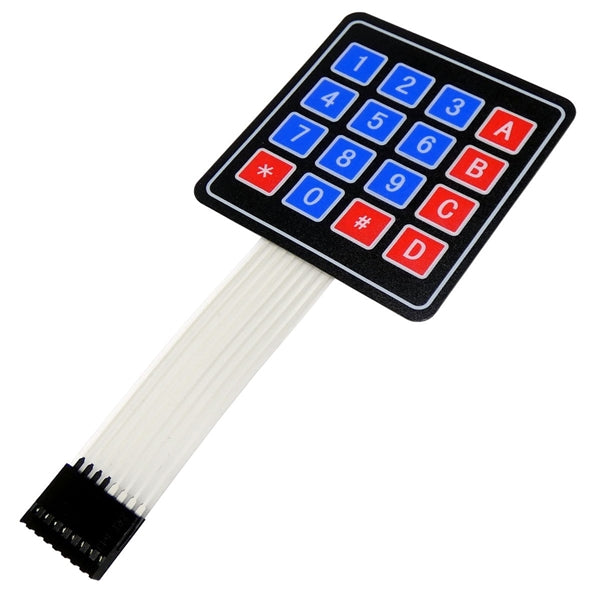Why Membrane Changes Are Essential for Long Lasting Control Equipment
Membrane layer buttons play an essential duty in guaranteeing the sturdiness and dependability of control systems throughout different sectors. As we check out the diverse benefits of membrane layer buttons, it becomes apparent that their value transcends simple capability, affecting user experience and functional effectiveness.
Introduction of Membrane Layer Switches
Membrane layer switches are functional and reputable parts frequently utilized in various digital control systems. The graphic overlay supplies both practical and visual design, while the spacer layer guarantees that the switches are activated only when pressed.
Membrane switches are usually favored in applications calling for a small and light-weight design, making them optimal for handheld gadgets, clinical devices, and commercial equipment. They can be customized to satisfy certain individual demands and can incorporate numerous features such as backlighting, tactile feedback, and several shades. Membrane layer buttons are immune to dirt, dampness, and impurities, making them ideal for environments where longevity is important.
Advantages of Toughness
In lots of applications, the longevity of membrane layer switches offers significant benefits that improve their total efficiency and integrity. These switches are designed to endure rough settings, making them perfect for use in demanding conditions such as high humidity, severe temperature levels, and exposure to chemicals. Their durable construction helps to stop damages from physical impact, guaranteeing lasting capability and decreasing the need for regular substitutes.
Additionally, membrane switches are resistant to put on and tear, which is important in applications where regular communication occurs. This durability converts to decrease maintenance costs, as organizations take advantage of reduced downtime and less solution interruptions. Furthermore, the encapsulated style of membrane switches protects internal parts from dirt and dampness access, further contributing to their lifespan.
One more advantage is their capability to preserve constant performance in time. With a high tolerance for mechanical anxiety, these switches maintain their tactile responses and electrical stability, ensuring customer fulfillment. Ultimately, the resilience of membrane layer switches over not only enhances operational performance yet likewise promotes self-confidence in their dependability, making them a favored choice for control systems throughout different industries.
Applications in Various Industries
Sturdy control systems utilizing membrane buttons discover comprehensive applications throughout a series of sectors, each benefiting from the distinct characteristics these switches supply. In the medical industry, membrane layer switches are vital for devices such as patient displays and diagnostic tools, where reliability and convenience of cleansing are paramount. Their resistance to dampness and contaminants ensures they preserve capability in sterilized basics settings.
The auto industry leverages membrane switches for control panel controls and infotainment systems, where they provide smooth, low-profile interfaces that enhance user experience. These buttons are also created to withstand rough problems, including direct exposure to severe temperature click this levels and vibrations.
In industrial setups, membrane layer buttons are typically utilized in machinery control panels, supplying responsive responses and toughness required for high-usage applications. Their capability to resist chemicals makes them ideal for manufacturing settings where spills and contaminants are regular.

Consumer electronics, such as cooking area appliances and remotes, also utilize membrane buttons for their convenience and cost-effectiveness. Overall, the flexibility and durable nature of membrane switches make them crucial throughout different industries, making sure efficient operation and longevity in control systems.
Design and Visual Charm
While capability is extremely important, the design and visual allure of control systems geared up with membrane switches play a critical duty in customer engagement and overall experience (membrane switch). The visual style of these switches can considerably influence user assumption and interaction. A well-designed membrane switch enhances the attractiveness of the tool, making it more attractive to users and cultivating a connection in between the user and the item
Membrane switches over supply a good deal of flexibility in layout, enabling producers to customize graphics, shades, and structures to line up with brand identity and product looks. Using vibrant shades and unique patterns can draw interest, while responsive responses can reinforce the individual's communication with the device. In addition, the ability to integrate LED signs and backlighting right into the membrane button design supplies both functional and visual benefits, enhancing presence and use in various environments.

Enhancing Individual Experience

Additionally, membrane layer buttons can be personalized to include graphical user interfaces, improving usability by providing info in a clear and user-friendly way (membrane switch). This customization can include icons, labels, and color coding that overview customers through complicated functionalities with simplicity. In addition, their versatility enables for combination in various atmospheres, making sure consistent performance whether in commercial equipment or customer electronics
The sturdiness of membrane switches likewise plays a crucial duty in customer experience. By standing up to severe problems and prolonged use, these buttons decrease the possibility of system failures, hence advertising reliability and individual self-confidence. Inevitably, the tactical use of membrane layer changes not only boosts performance however likewise significantly improves individual interaction with control systems, making them an indispensable part in contemporary design.
Conclusion
